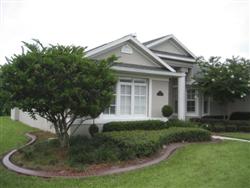







Kwik Kerb Curbing
Landscape Design
Ground Cover
Landscape Lighting
Pressure Cleaning
Irrigation
Patios, Walks and Walls
Decks, Arbors and Pergolas
Recent Projects


Landscape Lighting Design
While there are many opportunities to incorporate professional landscape lighting into the landscape, the most frequent use is to create a cohesive environment that projects an owner’s attitudes and effectively combines the lighting of focal points with safety and security lighting.


LIGHTING FOCAL POINTS. Focal points usually fall into one of the five categories, but there are others.
Large Trees, Specimen Plants, Art Objects, Architecture, Water Features
Before you light focal points, decide which elements of the focal points need to be stressed and from where they will be viewed. In all categories, beauty must be considered first.
Large Trees
If the tree has open growth, let the light spill down through the leaves and branches, creating interesting shapes and contrasts in highlight and shadow.
If the tree has full foliage like some pines, try cross lighting or using a grazing light. Trees of this type also look dramatic when left dark while the area behind it is lit for contrast.
If your focal point tree has an interesting bark texture, try grazing it to accent this feature and add a greater element of visual interest.
Specimen Plants
Consider hanging plants as well as ground plantings for focal point lighting. Try to throw shadows of smaller plants on walls and other surfaces for added effect.
Bonsai plants are very effective when silhouetted to accent their unique shapes.
Art Objects The general rule with art objects is to dramatize the art piece as well as the effect the artist is projecting in his work. When lighting art objects, make every effort to hide the light source.
Architecture
The same rule applies with architecture as it does with art, determine what points the designer was trying to bring out in the architecture and enhance it. Look at decorative construction techniques in masonry and wood facades. Highlight the gables, draw attention to the peaks. Two techniques; place fixtures at the bottom of the gables and project the light up from each side so that it meets at the tip of the peak, or place two fixtures under the peak and aim them down to the lower edges.
Entryways - Drawing attention to the front door itself is many times warranted. The door itself IS a focal point. Hand-carved wood, raised wood panels, artistic metal designs. Draw attention to the door from overhead paying close attention not to cast glare in the eyes of those entering and exiting the building.
Atriums - The objects in the atrium, columns, arches, breeze ways, ledges, shutters, cupolas, weather vanes, and seasonal and holiday flags can all be architectural focal points that can have attention drawn by professionally designed lighting.
Cross Lighting - A single light source in front of a statue is flat and boring. Borrowing a trick from the theatre, two light sources, one on either side are aimed to cross at the statue, creating depth and more visual interest.
Highlighting - In any given lighting situation, try to find and light a focal point. Focal points can be trees,statues or anything you want to accent. Uplighting, downlighting, or any combination can be used effectively.
Skeleton Lighting - The shapes and structures of tree and plant branches are natural for lighting. Fall and winter are beautiful and by uplighting or backlighting tree and plant skeletons, a very dramatic look can be created.
Vista View Lighting - Protect a valuable view by framing it with subdued uplights and using below knee level downlight in the line of the view. The viewer must be able to see through the lighting to the vista beyond.
Flood Lighting - On a residential level, soft, gentle floodlighting is used as background lighting to create visual depth. Don’t confuse this with high intensity discharge mercury and sodium vapor lighting used for commercial security and parking.
Water Features Fountains, fish ponds, and moving streams, all lend themselves to the introduction of landscape lighting. Remember the clarity & cleanliness of the water itself will in most cases determine the approach. Filtered, crystal clean water can be lighted either from within or from above. Dirty water is usually best if lighted from above or used as a reflecting surface to accent surrounding features.
Mirror Lighting - This lighting style, achieved without underwater light, is particularly effective with dark bottomed pools and ponds of still water. By lighting trees and plantings on the opposite side from the viewer, one will reflect the lighted objects on the surface of the water, like on a moonlit lake.
SAFETY
‘Avoiding Injury’ - When evaluating the site, special considerations of SAFETY should be pointed out and made part of the design.
One of the most important reasons we need quality professionally designed landscape lighting is so the homeowner and their family can move about their property in SAFETY after dark.
Walkways should always be lighted to prevent anyone from tripping over obstacles and as a directional guide for the people using them. Entryways should be carefully illuminated. It is important to draw attention to the entryway itself, but be careful not to direct light into the eyes of anyone leaving the residence. Address numbers should also be well-illuminated.
Other areas to light for SAFETY include spas and pools, patios, barbecues, work and utility areas, etc...
Changes of grade and elevation also require safety lighting. Steps, stairs, gradual slopes and ramps should always be well-illuminated and special considerations made for those that use them in order that the light suits the user.
Recreational Lighting - Special study and selection of lighting for specific activities is a must. For small area games like ping pong, shuffleboard or putting greens, the light must be even and general, yet not in the eyes of the players. Large court games, volleyball, badminton or tennis will require specialized lighting design. Seek assistance on these specialize
SECURITY
PROTECTING loved ones is a number one concern. A well lighted home does deter intrusion. It's a proven fact!
Security lighting has become a ‘must’ for homeowners. Security Lighting has two major functions:
Persuading potential intruders to avoid your lighted premise; or should this fail; making it possible for you to see and identify any approaching intruder. The landscape lighting system will give your property an occupied feel, so would-be intruders cannot be sure whether or not anyone is home.
While no passive lighting system can keep a determined intruder out, most criminals crave the anonymity of darkness. A professional landscape lighting system will discourage their attempts to violate your property by making them so uncomfortable that they’ll head for an unlithouse and leave you and your house alone!

